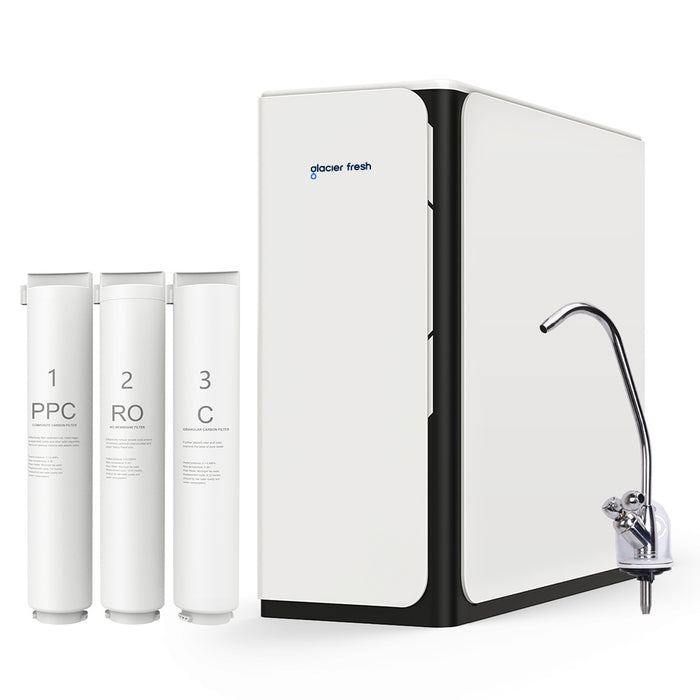Unlock Crystal Clear Water: Discover the Secrets of Under Sink Reverse Osmosis Filters!
In today's world, access to clean, safe drinking water is more critical than ever. With increasing concerns about contaminants in our water supply, many homeowners are turning to under sink reverse osmosis (RO) water filters to ensure their families are drinking the purest water possible. These systems have gained tremendous popularity due to their effectiveness in removing a wide range of impurities, including harmful chemicals, heavy metals, and bacteria. In this article, we will explore how under sink reverse osmosis filters work, the numerous benefits they offer, and essential maintenance tips to keep your system running smoothly.

How Under Sink Reverse Osmosis Filters Work
The reverse osmosis process is a fascinating technology that mimics the natural filtration of water through membranes. An under sink reverse osmosis system typically consists of several stages of filtration. Initially, the water is passed through pre-filters that remove larger particles and chlorine, which can damage the RO membrane. The heart of the system is the RO membrane itself, a semi-permeable barrier that allows only water molecules to pass through while blocking contaminants like lead, nitrates, and other harmful substances.
Once the water has been filtered through the RO membrane, it then goes through post-filters, which further refine the water's taste and quality. It’s important to note that the efficiency of this filtration process is heavily reliant on water pressure; higher pressure typically results in better filtration. As a personal anecdote, a friend of mine recently installed an under sink RO system and was amazed by how much better their water tasted compared to their previous filtration method. Understanding these stages helps illustrate the complexity and effectiveness of under sink reverse osmosis filtration systems.
Benefits of Under Sink Reverse Osmosis Filters
Investing in an under sink reverse osmosis water filter comes with a multitude of benefits. One of the most notable advantages is the significant improvement in water taste and odor. Many users report that their tap water tastes fresher and cleaner, making it more enjoyable for drinking and cooking. Additionally, these systems effectively remove a wide array of harmful contaminants, such as lead, arsenic, and chlorine, which can pose serious health risks over time.
Another key benefit is the convenience of having a filtration system installed directly under your sink, saving valuable counter space and providing easy access to pure water whenever you need it. Compared to purchasing bottled water, using an RO system can be more cost-effective in the long run, as it reduces the need for constant trips to the store and is more environmentally friendly by decreasing plastic waste. Personally, I’ve seen my friend’s family significantly cut down on their bottled water consumption since installing their RO system, making it a win for both their wallet and the environment.
Maintenance Tips for Optimal Performance
To ensure your under sink reverse osmosis filter operates at peak efficiency, regular maintenance is essential. First and foremost, it’s crucial to change the filters according to the manufacturer’s recommendations, which typically ranges from every six months to two years, depending on usage and water quality. Neglecting this step can lead to decreased performance and water quality.
In addition to filter changes, it's advisable to periodically clean the system to prevent buildup of contaminants. Monitoring the water quality is also vital; you can do this by checking for changes in taste, odor, or flow rate. If you notice any issues, refer to the manufacturer’s guidelines for troubleshooting. A friend of mine encountered a problem with slow water flow, and after following the maintenance tips, they were able to resolve the issue quickly and efficiently. Keeping up with these maintenance tips will ensure your under sink reverse osmosis system continues to provide you with the clean, safe water you need.
Enhancing Water Quality at Home
In summary, under sink reverse osmosis water filters are an excellent solution for achieving clean, safe drinking water at home. They work through a sophisticated filtration process that effectively removes harmful contaminants, providing numerous benefits such as improved taste and convenience. By following proper maintenance tips, you can ensure your system remains in optimal condition for years to come. If you’re considering enhancing your water quality, investing in an under sink reverse osmosis system may very well be a step towards a healthier lifestyle for you and your family.














